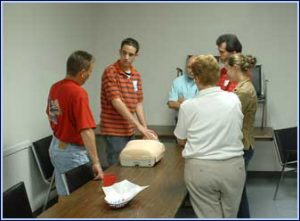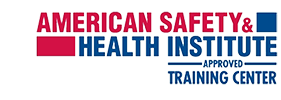 Each year, the American Heart Association (AHA) releases updated guidelines for how to improve the effectiveness of CPR. Because research and studies are continuously leading to new information which is then reviewed by leaders at the AHA, they use that information to ensure improved training for those taking CPR classes and also to lead to a better outcome for victims of cardiac arrest.
Each year, the American Heart Association (AHA) releases updated guidelines for how to improve the effectiveness of CPR. Because research and studies are continuously leading to new information which is then reviewed by leaders at the AHA, they use that information to ensure improved training for those taking CPR classes and also to lead to a better outcome for victims of cardiac arrest.
Global CPR Guidelines
Every five years, the International Liason Committee on Resuscitation meets to discuss the latest studies and research and release global guidelines and protocol for how CPR is performed. ILCOR last released guidelines in 2015 and will release new information in 2020. The members of ILCOR are:
- American Heart Association
- European Resuscitation Council
- Heart & Stroke Foundation of Canada
- Australia & New Zealand Committee on Resuscitation
- Resuscitation Council of South Africa
- InterAmerican Heart Foundation
- Resuscitation Council of Asia
American Heart Association CPR Updates in 2019
While ILCOR updates the global guidelines every five years, the individual organizations can amend and update their own standards annually as they see regional or national health trends.
Last year, the AHA made it a requirement that instruments and training devices used in CPR training provide voice-directed, specific, and real-time coaching feedback. These devices were used to provide more in-depth feedback so students could learn “high-quality CPR.” This simply means knowing the proper speed, depth, and reflex rates to provide more effective life-saving CPR.
It’s important to note that the regulation, passed in January 2019, was not meant to implement immediately. Instead, training facilities had 18 months to update equipment.
American Heart Association’s 2015-2020 CPR Updates
From 2015 through 2020, the updates to the CPR guidelines include the following:
ABCs to CAB
In the past, CPR was administered through the ABCs – Airway, Breathing, and Circulation. While all three are essential, the order has changed to CAB – first circulation, then the airway, then breathing. First 30 compressions are given, then the airway is opened, then two rescue breaths are administered, allowing a victim to receive compressions much faster and only delaying the rescue breaths by around 20 seconds.
Made the CPR Process More Efficient
For a long period of time, there was a “Look, Listen, Feel” guideline to determining if someone needed aid. This meant a rescuer was to look, listen, and feel for a victim’s breathing. This was removed from the CPR process to prevent delaying the time it takes for a victim to receive CPR. Additionally, the AHA continued the practice of not checking for a pulse as “lay” rescuers (bystanders coming to aid), often have trouble finding pulse points and may spend too long looking for a pulse rather than giving life-saving aid.
Emphasis on High-Quality CPR
As we mentioned above, CPR must be high-quality for it to be effective. This means the compressions must be performed at the proper depth of a full two inches at a rate of 100 per minute.
Reviewing the CPR Process
Today, as soon as you see an emergency, it’s important to call for help immediately. Rooted Mama Health explains that if the victim is non-responsive and does not appear to be breathing, begin CPR:
- Compressions – 30 compressions at 2 inches deep, 100 per minute.
- If the rescuer is trained in CPR, they should give 2 rescue breaths, otherwise, continue with compressions
- Rescue breaths begin by tilting the victim’s head back and lifting the chin slightly to open the airway, then pinching the nostrils closed and giving 2 normal breaths, watching the victim’s chest rise and fall.
- Continuing the cycle of continued compressions or 30 compressions and two rescue breaths.
Renew Your CPR Certification in 2020
As the guidelines change, it’s important to stay on top of your CPR certification so you’re able to give the most effective assistance. To schedule a class or set up an on-site CPR training course for your workplace or organization, reach out to our Raleigh location today at (919) 639-4848 or fill out our contact form with questions.



